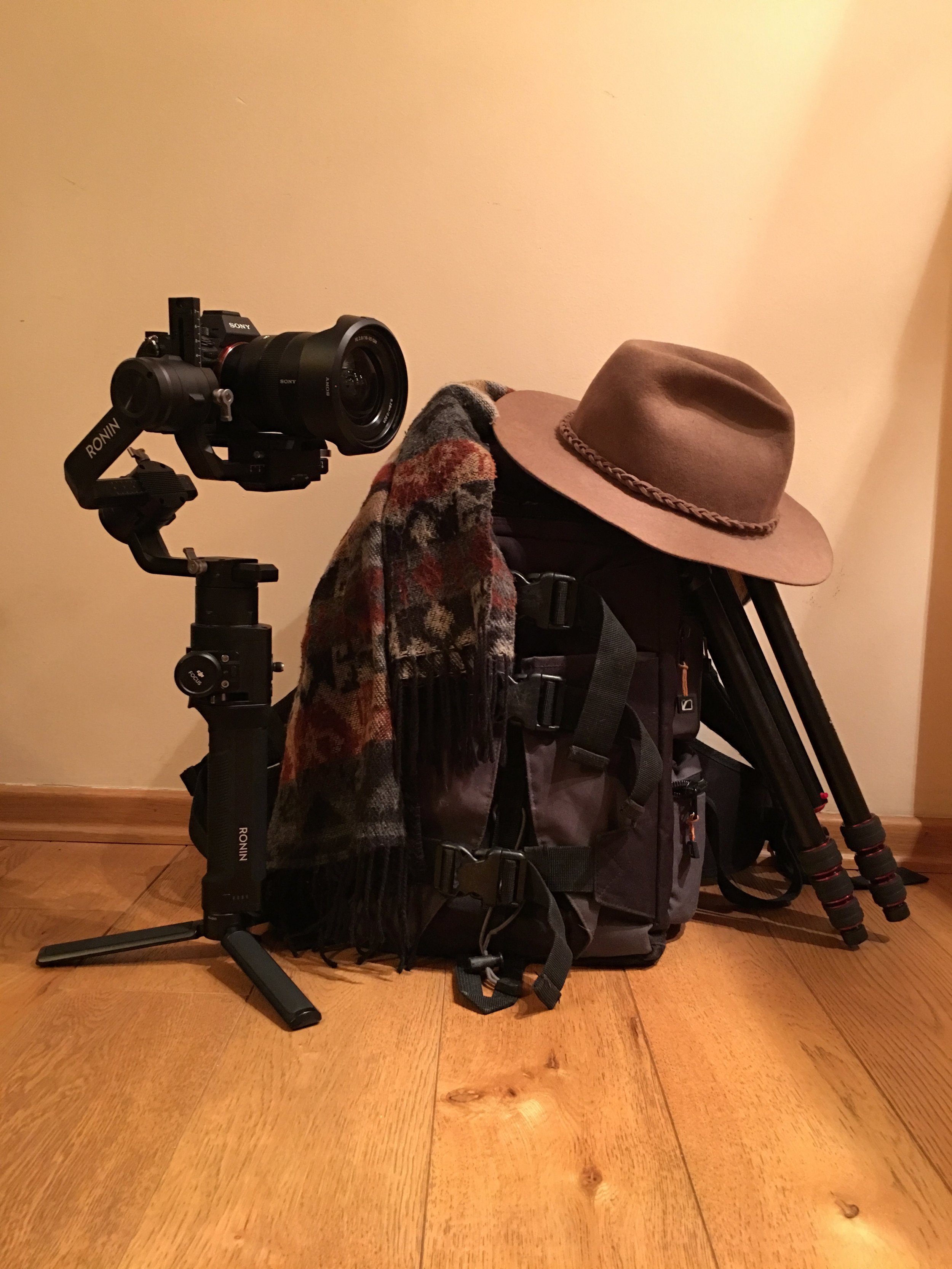The Ultimate Travel Filmmaker’s Kit
Travel films are becoming ever increasingly popular these days (See 5 Reasons Why You Should Start Making Travel Films). With technology getting cheaper and better every day, the choices are endless and sometimes, overwhelming. There really is no right or wrong combination of gear as it just depends on your style and needs.
But we are often asked what’s in our camera bag to help us make our growing list of award winning and internationally featured travel films. Therefore we’ve created what will be a constantly updated list of what we are currently using.
DISCLOSURE: As an Amazon Associate we earn from qualifying purchases.
SONY A7III - This mirrorless DSLR camera is the perfect balance of price, size and features. Its small size makes it a less obvious target to thief and gives you the perfect balance of performance, features all in a packed into a small, lightweight body.
SONY A7SII - This has become my backup camera. If you can afford it, I can’t stress enough the importance of traveling with two cameras. If one gets lost or breaks you will be left with nothing to capture your memories or finish you film. This camera is called the “king of low light” for its superior low light performance over any other DSLR. Although it lacks the drastically improved AF-C of the A7III, this camera is still a professional industry standard and my go to in low light situations.
SONY 16 - 35mm f/2.8 GM - This is probably my most used and versatile lens. With a great focal range and a fast f/2.8 aperture, the lens rarely comes off my camera. If the price tag of the f/2.8GM is too intimidating, an alternative is the cheaper f/4 version.
SONY 55mm f/1.8 - This is probably my second most used lens. Fantastic for portraits and great bokeh, it’s just enough zoom for some compression but also wide enough to be useable in most environments.
Batis 85mm f/1.8 - This lens is an absolutely beautiful b-roll and portrait lens. Rarely do I use this on a gimbal as the telephoto is too extreme but portraits and bokeh look absolutely beautiful with this lens.
Ronin S Gimbal - The Ronin S is my current gimbal of choice for it’s features and weight limit. Although larger than I’d like and not the easiest gimbal to fit in your camera bag. It’s easy customization via the app and build quality are outstanding.
Zhiyun Crane v2 - This was my main gimbal until I got the Ronin S but now it spends most of its time at home. It has a lighter payload which can’t handle heavy lenses like the 16-35mm GM but it’s smaller than the Ronin S and will fit in my camera bag.
Mavic Pro - Although I still travel with the Mavic Pro, I recommend you get the new and drastically improved Mavic Pro 2. If you need to save a little, the Mavic Pro is still a phenomenal drone that will fit in your camera bag.
Accessories
Batteries - You MUST have extra batteries. Be wary of third party batteries as they can often times be deffective or even cause harm to your camera. OEM batteries cost much more but it’s not worth the risk of damaging your camera going with generics.
SONY: Thankfully the battery life has improved on the newer Sony camera’s but you should at least have one backup to get you through the day.
MAVIC PRO / MAVIC PRO 2: I’d recommend having at least two extra.
Fireproof Battery Bag - Some airlines have battery restrictions so placing your drone batteries in a fireproof bag can insure they aren’t taken away.
ND/UV Filters - Cut down on light and protect your lens.
Microfiber cloths - These are a must to keep your lenses clean
USB Card Reader - If you have the Mavic Pro you’ll need a card reader to download the footage.
Travel Hard Drive - Don’t forget to have a place to backup your footage. I’ve been using these hard drives for years and have yet to have one die on me.
Sony Battery Quick Charger - If you have one of the newer Sony Alpha’s that use the NP-FZ100 batteries, you’ll want a quick charger as these things can take up to five hours to charge internally using USB.
Power Converter - It’s not just about adapting to the right country plug, it’s also about converting to the right voltage (220v, 110v) so you don’t blow your gear!
CineBags CB25B Revolution Backpack - This has been my main camera bag for years now. With room for two camera bodies, multiple lenses, my Mavic Pro, a gimbal (depending on model) and my 15” laptop, means I can fit all my expensive gear in the planes overhead and not risk anything being stolen or broken.
The CineBags CB25B fits a lot of gear. Featured here: 2 Sony Alpha cameras, 3 lenses, Zhiyun Crane v2 gimbal, and DJI Mavic Pro drone, plus room for batteries, accessories and 15” MacBook Pro.
LEARN HOW TO MAKE TRAVEL FILMS
Want to make travel films but not sure how to begin?
Nathaniel Connella is an award winning professional travel filmmaker who has been featured by National Geographic, BBC Travel, Lonely Planet and more. His eBook titled, ‘A Beginner’s Guide To Travel Filmmaking’ is an easy and to the point read that explains all the essential tools and ideas you will need to take your travel films to the next level.



